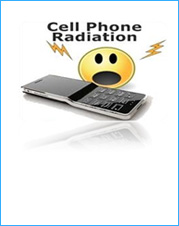|
| |
| |
|
|
| |
| Services |
|
|
|
|
|
|
|
|
|
|
|
|
|
|
| |
 |
|
|
|
|
|
| SAR Limits for head, Body in Canada/US versus ICNIRP : |
| Guideline |
SAR limit - Head, Neck and Trunk |
| Health Canada Safety Code 6/ US FCC OET 65 |
1.6 W/kg averaged over 1gram of tissue* |
| ICNIRP |
2.0 W/kg average over 10grams of tissue** |
|
|
* Defined as tissue volume in the shape of a cube.
** Defined as 10g of continuous tissue.
SAR measured for a cell phone :
The cell phone is made to continuously transmit at maximum output power. The maximum electric field induced in a simulating body/head tissue, as a result of radiated emissions from the cell phone under test, is then measured and the maximum SAR determined using this information and that of the test setup simulating body/head tissue.
SAR measurement methodologies are developed by international standards development organizations such as the Institute of Electrical and Electronics Engineers (IEEE) and the International Electro technical Commission (IEC). The international standards developed by these organizations provide measurement methods to test.
Portable and hand-held devices such as cell phones for compliance with Specific Absorption Rate (SAR) limits. These measurement methods are recognized world-wide as procedures for verifying RF exposure compliance.
Since the SAR value is determined at the highest power level in laboratory conditions, the actual SAR level of the cell phone can be well below this value when operating in everyday use. Cell phones and other portable devices use adaptive power control to reduce the transmitted power to the minimum possible while maintaining a good call quality. This is an important feature which is used to maximize battery life.
We offer SAR and RF exposure measurements to the following standards :
SAR measurement and regulatory work for the global market
Governments around the world support international committees in order to ensure standards are developed and published to maintain health and safety. Europe and Australia use human exposure limits which are independent from those mandated by the United States and Canada. The SAR limits for Europe and Australia are averaged over a 10g mass volume, while the United Stated, Canada and parts of Asia use limits which are referenced to 1g average mass volume. Due to these differences, tests performed to European and Australian standards are not readily accepted by the United Stated, Canada and parts of Asia. Another anomalous contributing factor is the fact that frequency bands at which, for example, GSM devices operate varies across these countries.
Tests performed to either the European (CE) or American (FCC) test standards (IEC/IEEC) are accepted in majority of countries around the world, although in some cases minor changes may be required. RFI performs SAR testing to all of these standards, ensuring our customers’ product(s) are release without delays and eliminating the possibility of a product recall from the global market.
|
|
|
|
|
|
|
|
|
 |
|
|
|
| |
| |
| |
|